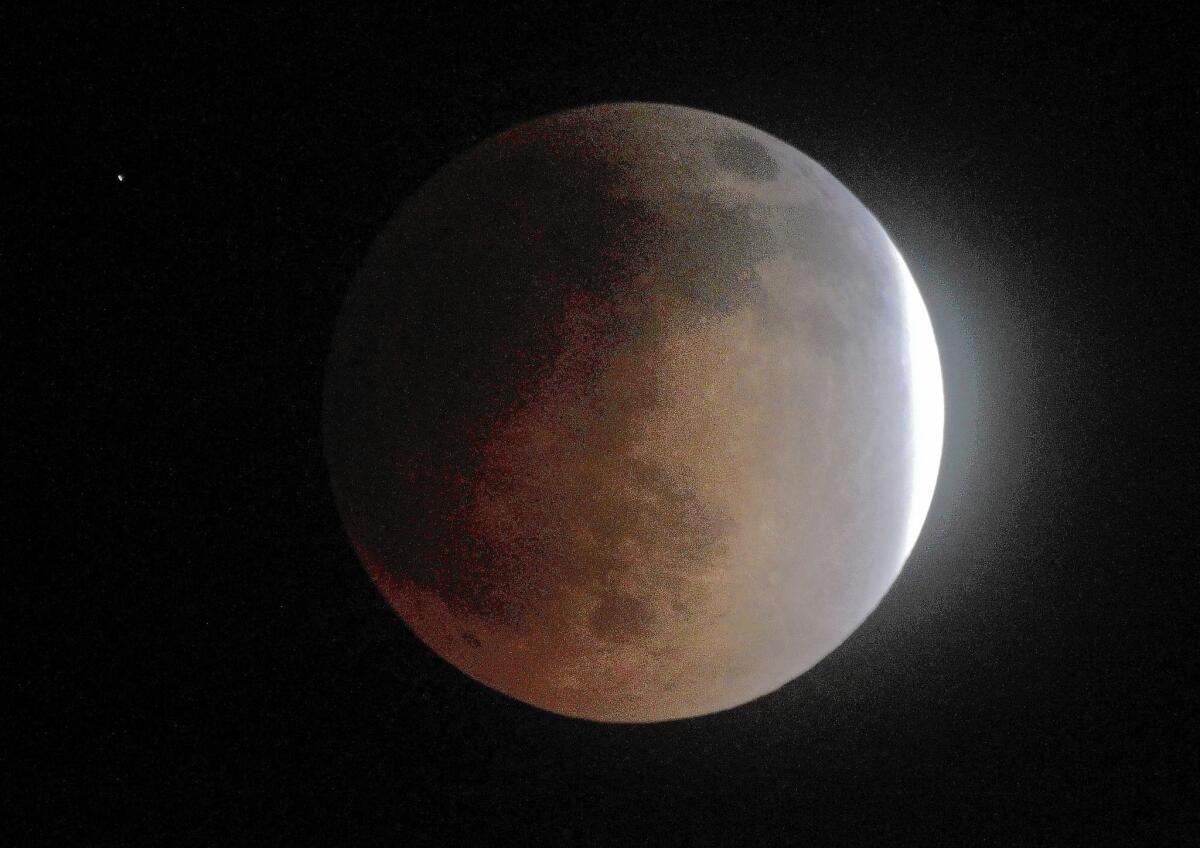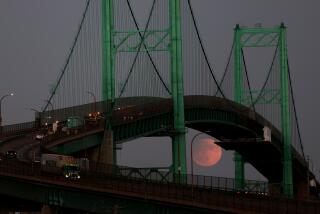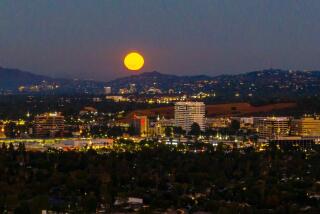‘Blood moon’ draws an appreciative crowd to Griffith Park

They came with iPhones, iPads, digital cameras and even some film cameras — ready to capture the total lunar eclipse known as a “blood moon.”
Griffith Observatory in Los Angeles offered a prime view, and hundreds of people were there when the eclipse began at 10:58 p.m. Monday. The full moon was beginning to move into Earth’s shadow, leaving the impression that someone had taken a bite out of it.
As the minutes passed, the shadow spread across more and more of the lunar surface.
By 12:07 a.m. Tuesday, the moon was entirely in Earth’s shadow. But instead of being blotted out, it glowed an eerie shade of red.
A hush fell over the observatory’s balconies and lawn as onlookers jockeyed for a good spot. Among the throngs of sky watchers was Johanna Huerta, who ushered in her 30th birthday with the rare event.
“It worked out that I got the ‘blood moon,’” said Huerta, who brought her 17-year-old brother, Angel, and her friend Flavia Ibarra, 23.
“I dragged them with me,” Huerta said. “I’m the dorky one.”
If the three had been standing on the moon and gazing up at Earth, they would have seen a black disk surrounded by a fiery ring of orange — the light of all the sunsets and sunrises at that moment in time. That orange light is what illuminated the lunar landscape.
Sometimes a blood moon appears as a bright copper color; other times it’s the dark reddish brown of dried blood.
The natural phenomenon vaulted into the public consciousness recently thanks to a Christian pastor named John Hagee and his 2013 book, “Four Blood Moons: Something Is About to Change.” According to Hagee’s ministry website, the book “explores the supernatural connection of certain celestial events to biblical prophecy.”
The lunar eclipse lasted until about 1:30 a.m., when the moon began sliding out of Earth’s shadow.
The celestial show was visible in just about the entire continental United States, which hasn’t been treated to a total lunar eclipse since December 2011. Parts of Central and South America were also able to witness this week’s eclipse.
The event was the first in what is called an eclipse tetrad — four successive total lunar eclipses with no partial lunar eclipses in between. The next three will occur Oct. 8; April 4, 2015; and Sept. 28, 2015.
Twitter: @DeborahNetburn @AliciaDotBanks








